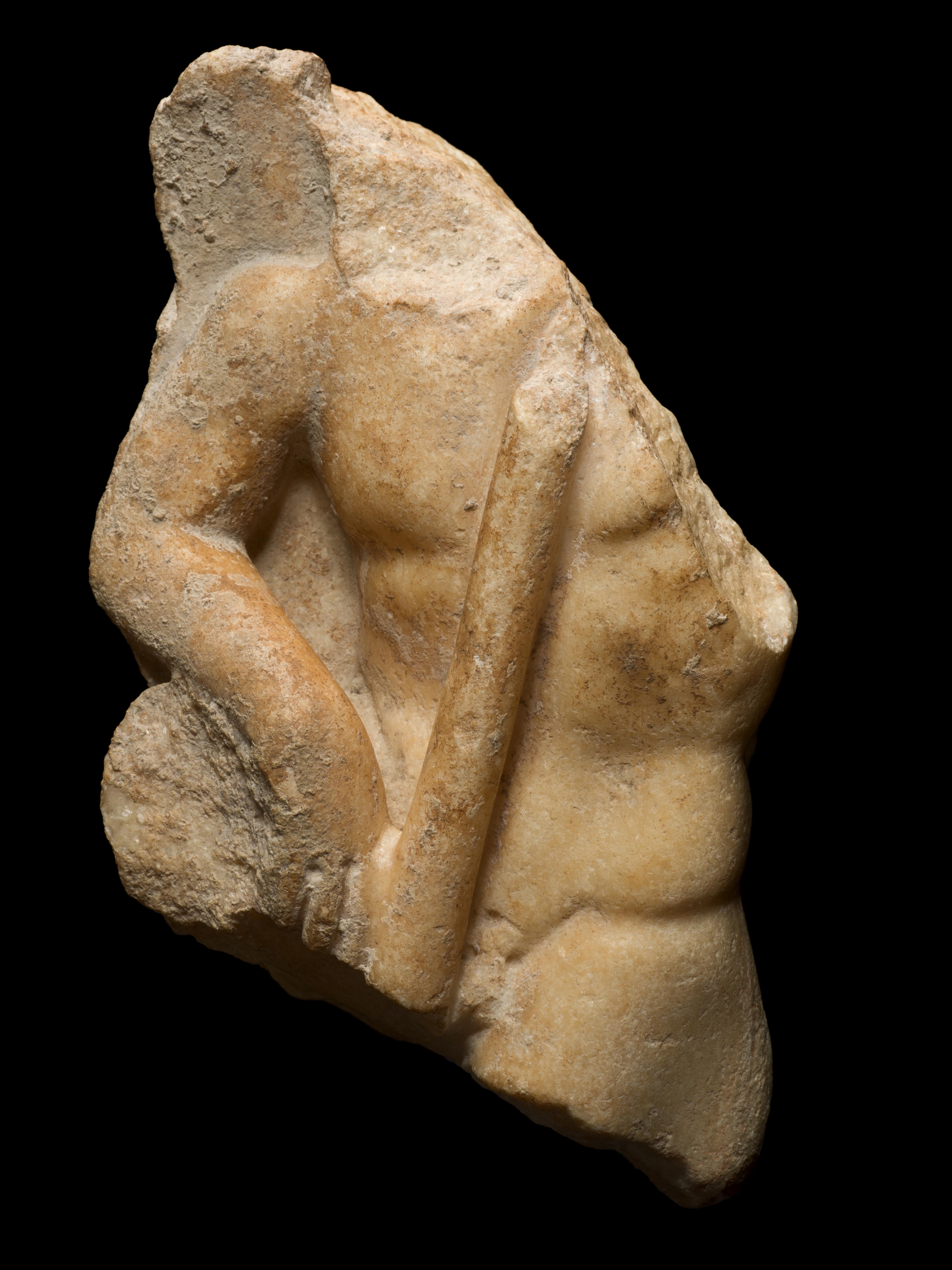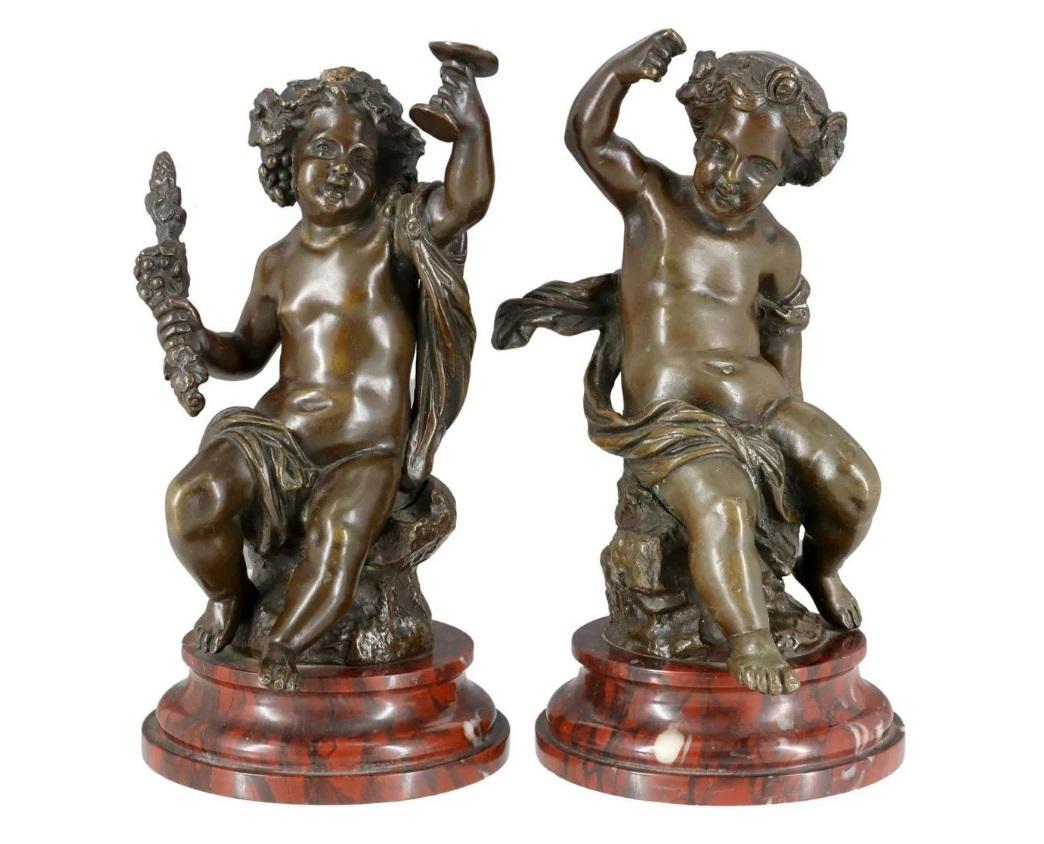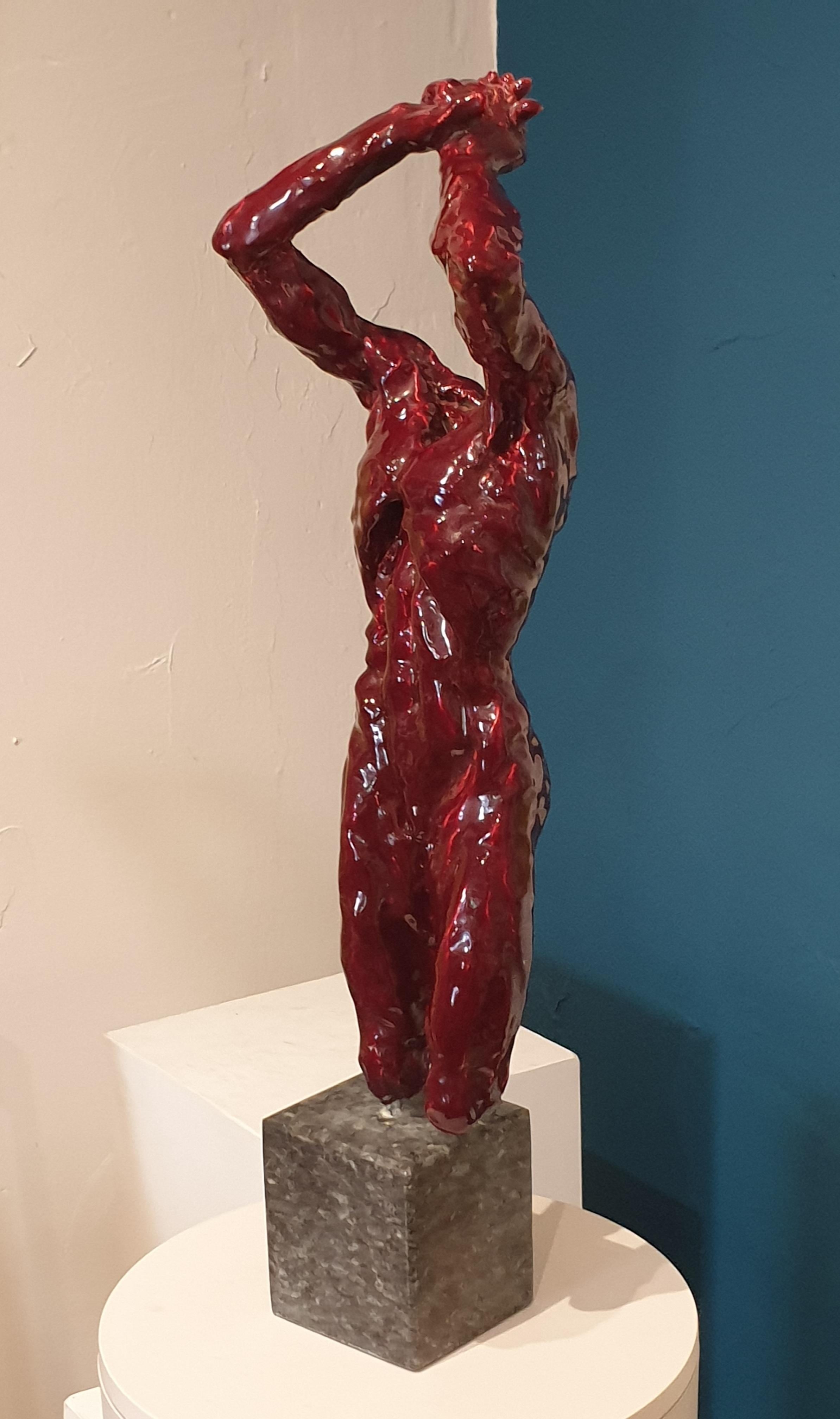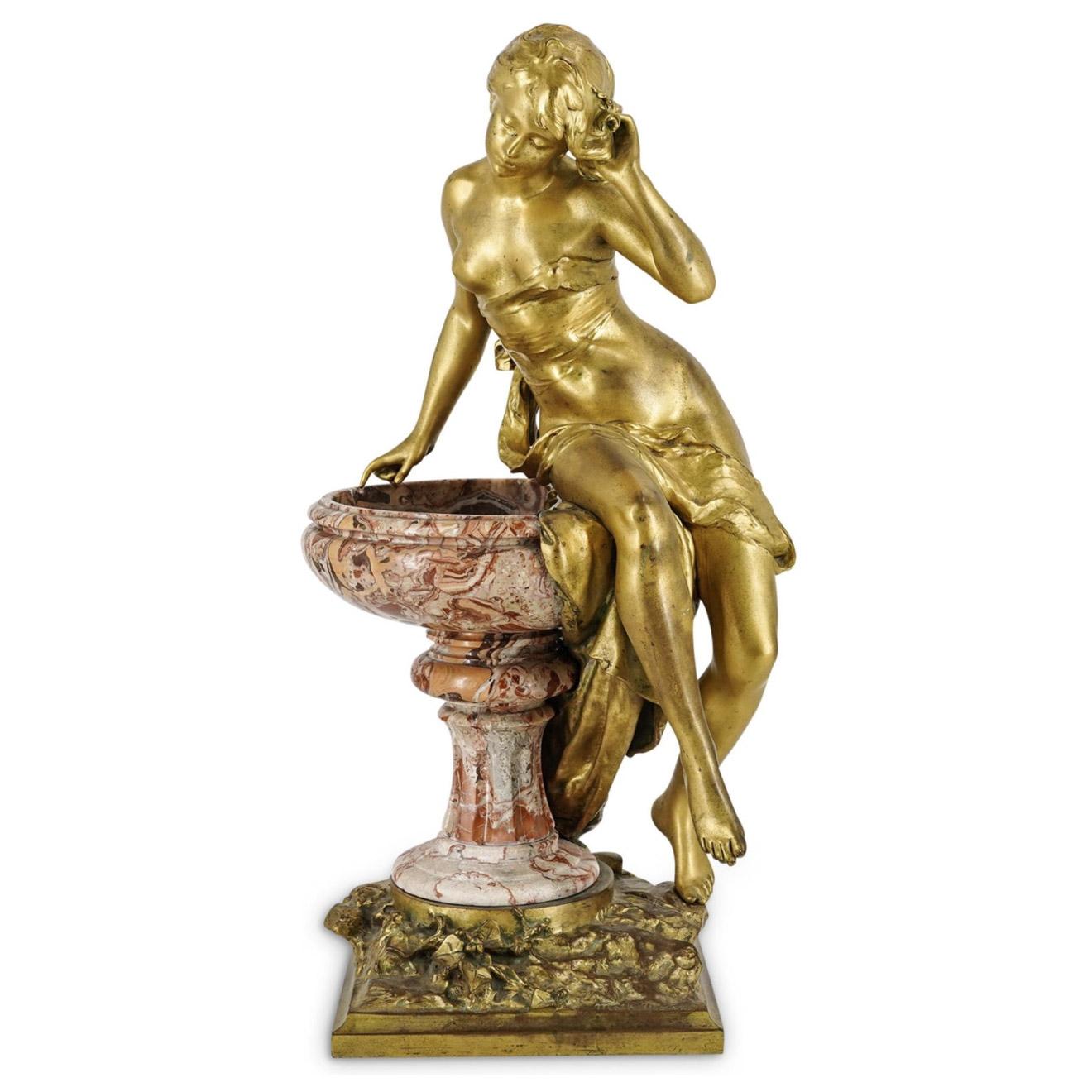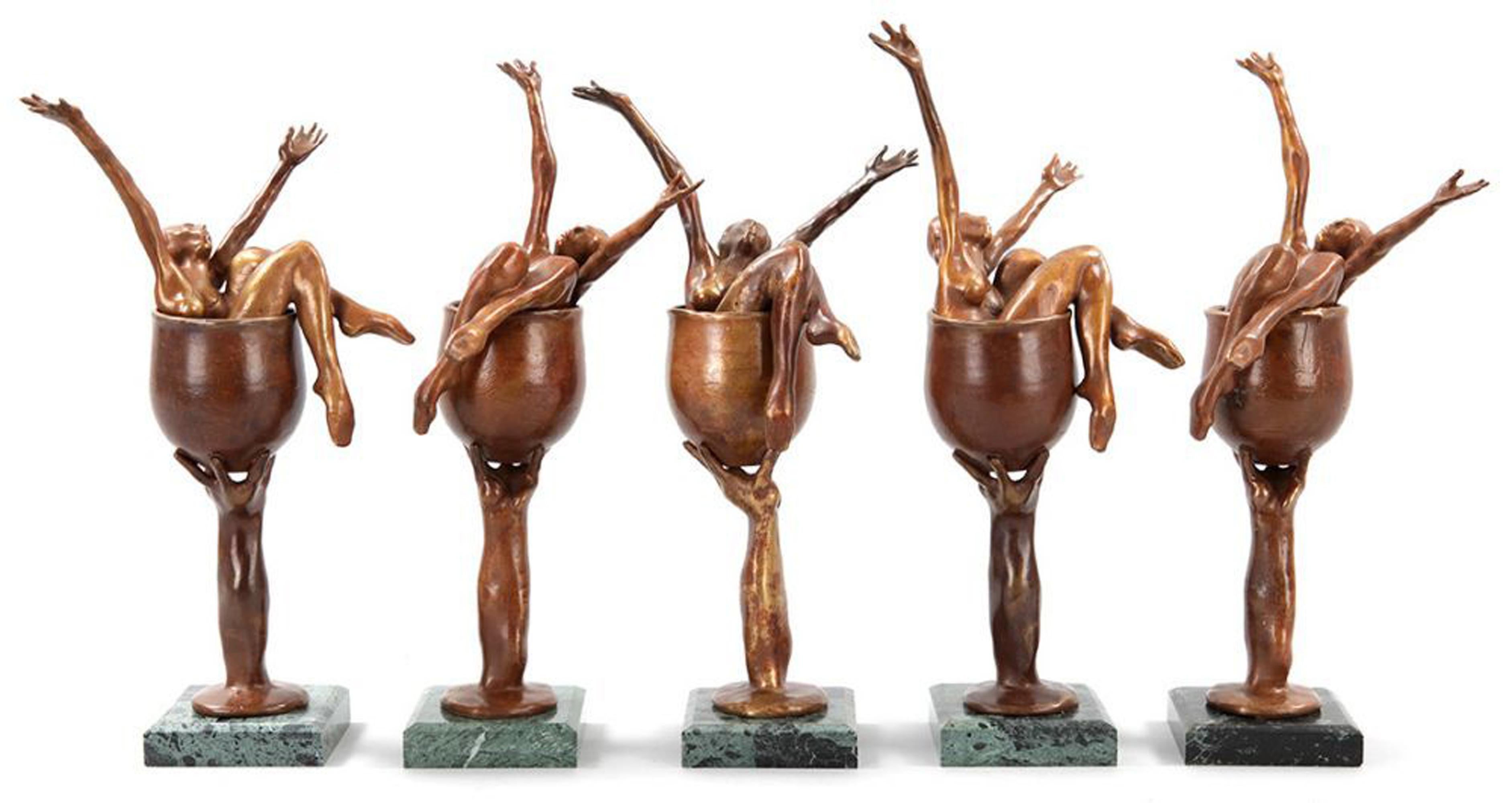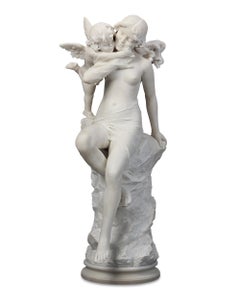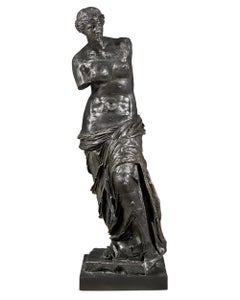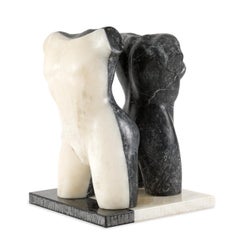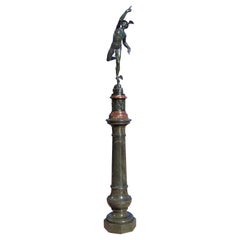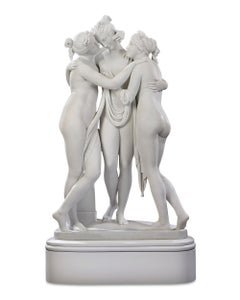
The Three Graces by Antonio Frilli
View Similar Items
Want more images or videos?
Request additional images or videos from the seller
1 of 8
Antonio FrilliThe Three Graces by Antonio FrilliCirca 1895
Circa 1895
About the Item
- Creator:Antonio Frilli (1850 - 1920)
- Creation Year:Circa 1895
- Dimensions:Height: 27 in (68.58 cm)Width: 43.5 in (110.49 cm)Depth: 80.25 in (203.84 cm)
- Medium:
- Period:
- Condition:
- Gallery Location:New Orleans, LA
- Reference Number:Seller: 31-54851stDibs: LU18610578842
About the Seller
5.0
Vetted Seller
These experienced sellers undergo a comprehensive evaluation by our team of in-house experts.
Established in 1912
1stDibs seller since 2013
14 sales on 1stDibs
Typical response time: 4 hours
More From This SellerView All
- Italian Marble Sculpture Of Venus And CupidLocated in New Orleans, LABeautifully detailed and lifelike, Venus and Cupid share a soft embrace in this remarkable Italian white marble sculpture. The feminine beauty gracefully leans against roughened rock...Category
19th Century Nude Sculptures
MaterialsMarble
- Arabesque on Right Side, Right Hand Close to Earth, Left Arm OutsideBy Edgar DegasLocated in New Orleans, LAOne of a series of sculpted dancers created by the incomparable Edgar Degas, this exceptional bronze exudes all of the expressivity one expects from this 20th-century great. Degas captures the essence of his model in the graceful work, as she strikes a particularly difficult pose of the arabesque. The dancer's features have been manipulated and simplified, executed in a manner that seems almost as if one of Degas' Impressionist canvases has come to life. Degas was obsessed with capturing the dancer in motion throughout his career. He rendered their grace and movement in oil, pastel, pencil, chalk and wax - in fact, of the seventy-four wax sculptures created by Degas during his lifetime, forty of them depicted dancers. Seven of these belong to his series that capture the various forms of the arabesque, and the present work is included among them. It details one of the most difficult and animated poses of the ballet. Degas’ dancer is precariously posed in a study of balance and motion, one leg gracefully thrust into the air as she tilts her body down towards the earth and extends her arm forward. The sense of her movement is perfectly captured in the extraordinary work, as well as the fluid lines of her body. The bronze is a sought-after rarity in terms of Degas’ sculptures. Not only are his dancers the most desirable of his work, but this bronze is also distinguished by the fact that it is a Valsuani bronze, meaning it faithfully records Degas’ wax version’s pose as it appeared at the time of its creation. Most Degas' bronzes that are found on the market were cast by Hébrard – these serialized bronzes are surmoulages, or “aftercasts,” that were cast from the modèle bronzes currently in the Norton Simon Museum (Pasadena). Because these bronzes are second generation, they are smaller and far less detailed that the current bronze. This example, however, was cast by Valsuani from a plaster that was taken directly from Degas’ waxes, according to scholarship by the art historian Dr. Gregory Hedberg. These plasters were created by Degas’ sculptor friend Albert Bartholomé shortly after Degas completed his wax figurines. Thus, they record the earliest versions of Degas’ wax sculptures, before they were damaged by time or handling, and before Degas himself altered the works. The Hébrard bronzes...Category
20th Century Impressionist Figurative Sculptures
MaterialsBronze
- Vénus De Milo Aux Tiroirs By Salvador DalíBy Salvador DalíLocated in New Orleans, LASalvador Dalí 1904-1989 Spanish Vénus de Milo aux tiroirs (Venus de Milo with drawers) Signed "Salvador Dalí EA III/IV" (on base) Bronze One of the most famous sculptures of Salv...Category
20th Century Post-Impressionist Nude Sculptures
MaterialsBronze
- Clio by Studio of RomanelliLocated in New Orleans, LAStudio of Raffaello Romanelli Early 20th Century Italian Clio Inscribed "Executé sous la Direction du Prof. Romanelli" (on base) Marble Clio, the muse of history from Greek mytho...Category
Early 20th Century Figurative Sculptures
MaterialsMarble
- CoupleBy Agustín CárdenasLocated in New Orleans, LAInfused with a crisp modernity and subtle sensuality, this bronze sculpture by Cuban-born artist Agustin Cárdenas is an exceptional example of late-2...Category
20th Century Modern Figurative Sculptures
MaterialsMarble, Bronze
- MasqueradeBy Fortunato GalliLocated in New Orleans, LAMasquerade, a traditional yet playful composition by Fortunato Galli, reflects the realism and intricacy that defined Italian sculpture at the end of the 19th century. Magnificently ...Category
19th Century Other Art Style Figurative Sculptures
MaterialsMarble
You May Also Like
- ANCIENT ROMAN MARBLE RELIEF OF A MALE TORSO, ROME, 2ND/3RD CENTURY ADLocated in Milan, ITThis muscular male torso probably comes from a larger relief, which would have decorated the front part of a sarcophagus. It likely represents the figure of a satyr, standing, with t...Category
15th Century and Earlier Nude Sculptures
MaterialsMarble
- untitledBy Bruno CeccobelliLocated in Firenze, FIBruno Ceccobelli was born on September 2, 1952, in Montecastello di Vibio (PG) Italy. and currently resides in Todi. He graduated from the Academy of Fine Arts in Rome under the tute...Category
2010s Italian School Nude Sculptures
MaterialsMarble
- Large Fine Bronze Sculpture of Mercury and Original Marble PedestalLocated in Rochester, NYFine Grand Tour bronze sculpture of mercury flying on the wind after Giambologna. Polished rouge marble and bronze attached base. Green marble pedestal. Inscribed Jean de Bologne...Category
Mid-19th Century Realist Figurative Sculptures
MaterialsMarble, Bronze
- Bronze Bust of Apollo Belvedere Grand Tour 19th CenturyLocated in Rochester, NYSuperb 19th century bronze and gilt bronze bust of the god Belvedere Apollo. Circa 1850. This wonderful grand tour bust is a marvel of refined beauty and elegance, crafted with richl...Category
19th Century Figurative Sculptures
MaterialsMarble, Bronze
- Pair of Classical Bronze PuttiBy Alfred BoucherLocated in San Antonio, TXBronze sculptures of Classical Putti, signed in cast after Alfred Boucher (French, 1850-1934), rising on stepped red marble bases.Category
Late 19th Century Nude Sculptures
MaterialsMarble, Bronze
- Louvre, Bronze after P. Julien Executed from a Marble Ordered by Marie-AntoinetteLocated in Paris, FRThis splendid sculpture represents Young Girl with a Goat (Amalthea and Jupiter's Goat), after the original by Pierre Julien commissioned by Louis XVI in 1785 and completed in 1787 for the cot of Queen Marie-Antoinette in Rambouillet. The work of the sculptor Pierre Julien decorated the interior of a grotto in a pavilion decorated with bas-reliefs by the same sculptor (acquired by the State by dation in 2003). The work was the main element of a rock basin, which was destroyed during the renovation of the gardens of the small castle. The same sculpture was seized during the Revolution and exhibited in the Louvre from 1829. The terracotta sketch, which belonged to the collector Ernst May, must have adorned his château de la Couharde (Yvelines) before entering the Louvre's collections in 1920. The bronze set with a beautiful gilded patina presented here is a work after the original by Pierre Julien (1731-1804) and dates from the 19th century (around 1850). The superbly preserved sculpture, which has belonged to the same family since its acquisition, is presented on its original base in grey serpentine marble. The quality of this work is doubly certified: - on the one hand it is stamped with a round stamp at the top "A. This stamp is a sign of high quality. Achille Collas (1794 - 1859) was the French engineer, engraver and illustrator, inventor among other things of the patented mathematical reduction process of the 19th century to reproduce sculpted objects in reduction, which was very successful. He was awarded a prize at the 1855 exhibition: his "Procédé mécanique", the name under which he prints all his productions, is easily recognisable by the finesse of its execution and by the famous stamp which appears on the base (terrace) of this sculpture. - On the other hand, an important signature is found on the terrace of the sculpture "F. Barbedienne Fondeur", founder. In 1844, Achille Collas, in order to protect his invention, formed the Société Collas et Barbedienne (Paris) with the art founder Ferdinand Barbedienne (1810-1892), which began to produce and sell famous but smaller sculptures in plaster, wood, bronze or ivory. The first object to be marketed was the Venus de Milo after the original in the Louvre Museum. Other sculptures such as the sculpture of George Washington, of which a bronze bust was made by the Barbedienne & Process Collas foundry, are currently in the Metropolitan Museum of Art. HEIGHT OF THE SCULPTURE without base 69CM + BASE = 84CM WIDTH OF THE SCULPTURE without base 28 CM + BASE = 30,5 CM LENGTH OF THE SCULPTURE without base 46 CM + BASE 51 CM The Collas and Barbedienne company was highlighted at the Great Exhibition in London in 1851, the objects of the Barbedienne foundry received a medal and sales soared. At the 1889 Universal Exhibition in Paris, the Barbedienne company again presented a large number of its compositions, including the large neo-Renaissance clock of 1878. This clock, which was part of the Leblanc-Barbedienne estate, was donated by his heirs to the city of Paris, and is kept in the city hall. Pierre Julien (20 June 1731 - 17 December 1804) was a French neo-classical sculptor who worked in the full range of rococo and neoclassical styles. He had an early apprenticeship in Le Puy-en-Velay, near his native village of Saint-Paulien, and then at the École de Dessin in Lyon, before entering the Paris workshop of Guillaume Coustou le Jeune. In 1765, he won the Prix de Rome for sculpture with a bas-relief panel depicting a subject from Antiquity and entered the Royal School for Protected Pupils, which offered a special curriculum under the direction of the painter Louis-Michel van Loo. He was a boarder at the Académie de France in Rome from 1768 to 1773, where he was influenced by the wave of neoclassicism affecting his fellow students. As boarders were required to do, he sent back to France a slightly reduced marble copy of the so-called Cleopatra, the Sleeping Ariadne from the Vatican, which survives in Versailles. Back in France and with his former master, he worked on the sculpture of the mausoleum of Louis, the Grand Dauphin, in the cathedral of Sens. After a failed attempt in 1776, with his Ganymede, he was accepted by the Royal Academy of Painting and Sculpture in 1778, with a Dying Gladiator. He was appointed one of the first members of the Institut de France in 1795, and knight of the Legion of Honour in 1804. He was commissioned by the Count of Angiviller, director of the King's Buildings, on behalf of Louis XVI, to paint the figures for a series of life-size portraits of the great men of France: he produced a Jean de La Fontaine and a Nicolas Poussin, whom he chose to depict in a nightgown, similar to the draperies of a Roman toga. While fulfilling commissions in Paris, for the church of Sainte-Geneviève (now the Panthéon, Paris), or for the Pavillon de Flore in the Louvre, he sculpted in 1785 a virtuoso marble set representing the nymph Amalthée and Jupiter's nurse goat for the Queen's Dairy at the Château de Rambouillet; for his model, he adapted the pose of the famous Venus of the Capitoline. The bas-reliefs of the Dairy, considered his masterpieces, were sold at auction in 1819, but were recovered by the State in 2005, thanks to a gift from the son of the great dealer-collector Daniel Wildenstein. 19th century French school, after Pierre Julien (1731-1804)Amalthea and Jupiter's Goat Bronze with a light brown patina and gilding, reduction made after the marble by Pierre-Julien 1785 executed for Marie-Antoinette at the Laiterie du parc du château de Rambouillet in the Louvre Museum. Among his major works: - Dying Gladiator, marble, 1779, Musée du Louvre. - Ganymede pouring nectar to Jupiter changed into an eagle, [4] marble group, 1776-1778, Paris, Musée du Louvre. - Jean de La Fontaine, marble, 1783-85. Musée du Louvre - Nicolas Poussin, marble, 1789 - 1804. Musée du Louvre - Sketch of a model in terracotta by Nicolas Poussin, ca. 1787 - 1788. Musée du Louvre - Amalthea and Jupiter's goat, marble group, 1787 for the Rambouillet Dairy. The Queen's Dairy at Rambouillet - The girl with the goat, terracotta statuette, 1786. Louvre Museum - Sainte Geneviève restoring her mother's sight, terracotta bas-relief, 1776. Musée du Louvre The works of the famous sculptor Pierre Julien have been referenced in several books and catalogues, including The exhibition catalogue. Gilles Grandjean and Guilhem Scherf. "Pierre Julien 1731-1804". Le Puy-en-Velay, France: Musée Crozatier, 2004. The Lure of Classical Sculpture 1500-1900 (Yale University Press, 1981), cat. no. 24, pp 184-87). Michael Preston Worley, 2003. Pierre Julien: Sculptor to Queen Marie Antoinette. The first modern monograph. Europe in the age of enlightenment and revolution, a catalogue from the libraries of the Metropolitan Museum of Art (fully available online in PDF format), which contains information on Julien. Excerpts from the Grove Dictionary of Art online Pierre Julien in American Public Collections, on the French Sculpture Census website STATUE BARE (BODY) NANNY GOAT (ANIMAL) AMALTHAEA SITTING WOMAN ABOUT US: AYN GALLERY is located in the heart of old Paris on the Ile Saint-Louis surrounded by the Seine, in the most prestigious district of Paris. Just a few steps away from Notre Dame, like a village, this place preserved from urbanists offers a setting as it existed centuries ago with its numerous private mansions which earned the island the nickname "island of palaces" and its illustrious occupants: Charles Baudelaire, Marie Curie, Georges Pompidou or Camille Claudel Our gallery is located just opposite one of the oldest churches in Paris. As the eponymous name of the place indicates, Yasmine Azzi, the owner and artistic director of the place, has a keen eye. Born from the desire to bring together, in a unique space, vintage pieces of 20th century design, contemporary creations, original works of art and interior design know-how, AYN GALLERY was created in 2017. Our gallery presents an eclectic and daring mix, driven by a total freedom of styles and periods. We offer a collection that combines aesthetics and authenticity, in a word what we like and what our customers like. We offer an inspiring selection of furniture from the last century with rare antiques, but also precious objects and lighting with a special emphasis on vintage Italian...Category
19th Century Rococo Figurative Sculptures
MaterialsMarble, Bronze
Recently Viewed
View AllMore Ways To Browse
1900 Advertisement
Greek Replica
Three Goddesses
Divine Feminine
Picasso Three Dancers
4 Graces
Three Graces Sculpture
Marble Roman 1st Century
Bronze Nude B
Italian Sign Advertisement
Gentle Death
Bronze Canova
Canova Bronze
Antique Victoria Australia
Antique Fabric Reproductions
Three Graces Bronze
Olympus Art
Di Sandro
